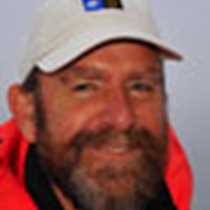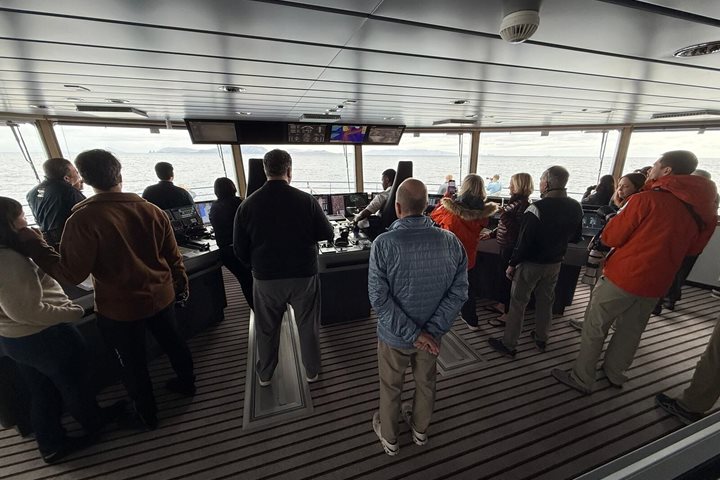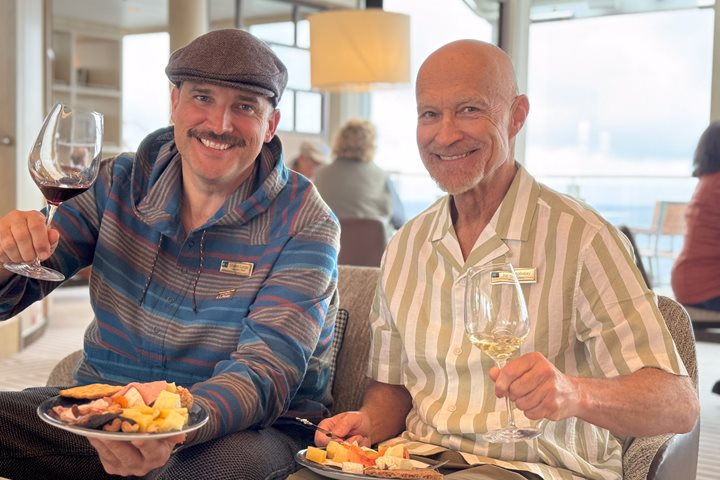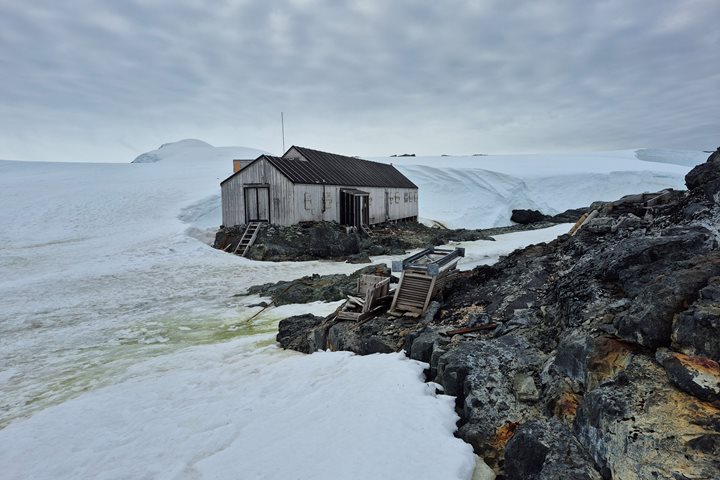Antarctica is in the record books as the coldest, highest, windiest continent, shaped by the relentless sculptor ICE. Although we are exploring the warmest, lowest, mildest tiny sprig of this giant land, we saw the evidence of the Great Sculptor all around us.
By 0600 our keen corsairs were already manning the decks at the promise of scenic booty. We threaded the icy defile of the Lemaire Channel, black water 1000’ deep and on either side sheer mountains soaring 3,000 feet straight up to icy peaks. Once round the back of these crags we found a sheltered anchorage in Port Charcot, named after the charismatic French explorer Jean-Baptiste Charcot who headed two courageous overwintering expeditions here in 1903 and 1907. Disappointed to find that our landing site was blockaded by impervious glacial ice, we took to the Zodiacs instead to explore the bay.
Behind us great hanging glaciers tumbled down the steep slopes and a motley medley of trapped icebergs lay wrecked in the shallows, the carcasses of a once glorious fleet of tabular icebergs. Sneaking in between blue arches, dripping icicles and the ribbed ruins of capsized iceblocks we came across a listing berg, which was a perfect snow slope for a dozen dozing seals. Crabeaters—the most numerous seal in the world, sleeping off last night’s banquet of krill, happily yawning, scratching, and sighing off each blissful bellyful.
But among them was a longer, greyer more sinister shape—the infamous leopard seal. Powerful hind flippers, incredibly long pectoral flippers, the broad shoulders of an Olympic swimmer, and when it raised it, the massive shark-like head of a predator. Though it happily exploits the krill abundance like crabeaters, in summer the leopard seal makes a good living from ambushing penguins as they rejoin or leave their breeding colonies.
In the afternoon we turned back to the south shore of Anvers Island to visit the only American research base on the Peninsula, Palmer Station. Here we encountered a different version of ice: a field of brash ice, boulder-sized chunks of floating glacial ice. We had to use our Zodiacs like icebreakers to butt our way through a sea full of floating rocks: this ice is dense and dangerous, for the sharper edges can puncture the toughest rubber. After half an hour of dogged Zodiac driving we were ashore at this compact and prestigious cluster of buildings, manned by generations of scientists since 1965.
We were given a tour of the labs, aquarium, and living quarters, where penguins, plankton, and marine life have been studied intensively for decades. No one missed the chance to buy souvenirs at the Palmer shop, and we and the staff toasted our success with coffee and their legendary Antarctic brownies. Our faithful Zodiacs brought us safely back through brash ice and falling snow to a warm ship.









